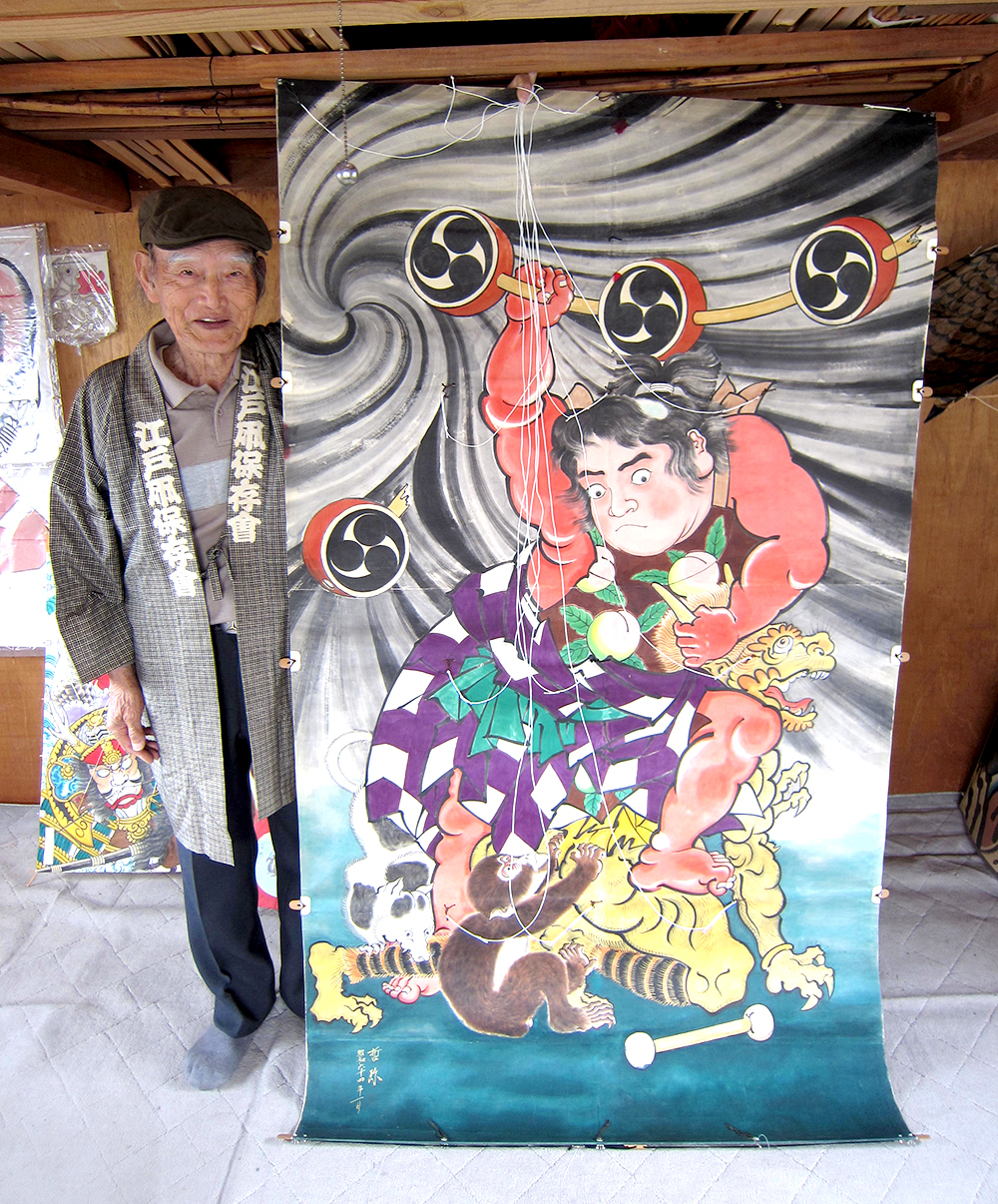Japanese kite artist Tetsuya Kishida, 89, has been creating and flying kites since the age of 6. He used to be a salesman for the steel industry and he later sold bonsai. In his late 40s, he finally turned his hobby of painting kites into a profession. His artistic repertoire is inspired by images from musha-e, a genre of ukiyo-e (floating world images) that depicts samurai in battle scenes. He also paints Japanese heroes the from the Heian Period (794-1185) to the Edo Period (1603-1867), including kabuki stars. Although kite painting is his greatest passion, flying them comes a close second. Five days a week, weather permitting, he goes out with four similarly minded friends, and they fly their kites.
To lie on the grass and gaze at a beautiful kite above is the best feeling in the world. I rarely have this pleasure as I'm usually chasing my kites. That's wonderful, too. I make Edo-style kites, which are stabilized by 14 to 17 lines that are connected to the sides of the picture and spaced at regular intervals. With these lines we balance the image so people on the ground can see it well. On the top, we add an extra bamboo pole that vibrates to create a wonderful buzzing sound as the wind carries the kite. This is what makes an Edo kite special. It lets people know that there is a kite above them. "Look up!"
Kites are a perfect way to study history. Kites are invested with prayers for children to grow into healthy and strong adults. This is why I paint strong characters. For example, Momotaro is a cute but powerful hero in Japanese folklore. When depicted as a baby, he is shown with peaches because he was found floating down the river in a giant peach. On a kite, however, he is depicted fighting demons, helped by his friends a dog and a monkey.



















With your current subscription plan you can comment on stories. However, before writing your first comment, please create a display name in the Profile section of your subscriber account page.